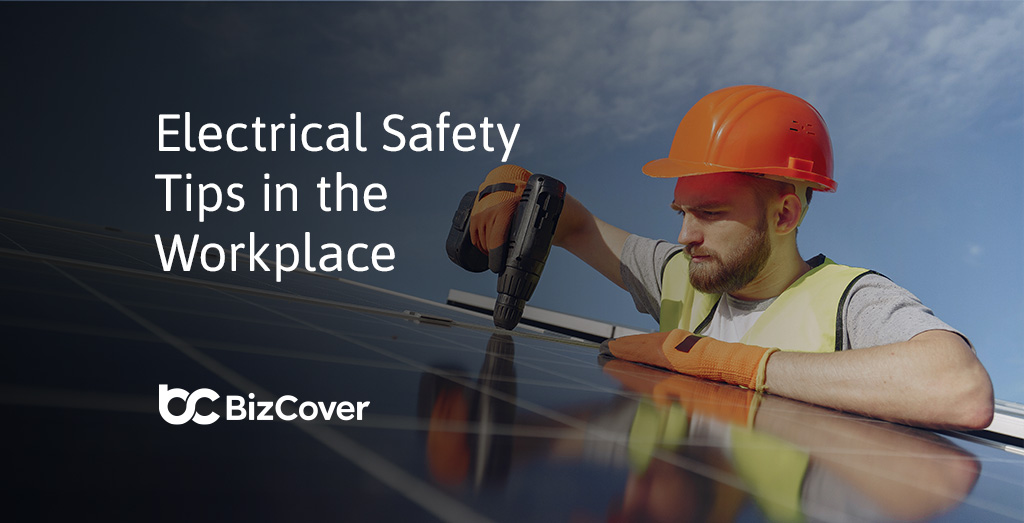Top electrical risks and safety tips in the workplace
It should come as no surprise to anyone that electricity can be very dangerous – and certainly dangerous enough to cause very serious injuries, or worse. But electricity is also an essential utility for modern living; it enables the systems our society depends upon to function. It’s a safe bet that most people today wouldn’t want to return to pre-electricity times and permanently go off the grid.
The electrical systems and infrastructure that we all depend on are installed, serviced, and kept in good working order by licensed electricians. And a critical trait that all licensed electricians learn through their electrician apprenticeship is an in-depth understanding of how to work safely with electricity.
From 2012-2015 more than 2,000 electrical workers in NSW received electric shocks on the job, some of which resulted in serious injury. Forewarned is forearmed, so when it comes to electricity and safe work practices, it doesn’t hurt to be reminded about electrical safety and electrician safety requirements when working on site.
What is an electrical hazard?
An electrical hazard is a scenario where there’s potential for harm due to electricity. This could lead to severe outcomes like electric shock, burns, or even death. Some of the key sources of these hazards include:
- Touching live parts, resulting in shock or burns. For instance, when exposed wires touch metal surfaces.
- Electrical faults that could lead to fires.
- Situations where electricity might ignite flammable materials, like in a paint spray booth.
It’s worth noting that the danger level varies depending on the environment. Working outdoors, or in damp locations, can increase your risk or getting electrocuted, as the equipment may get wet or damaged.
Confined and grounded spaces, like the insides of a tank, make it challenging to dodge electrical shocks during faults. Also, portable electrical gear, like extension cords, is more susceptible to wear and tear, which could increase the dangers.
Managing electrical hazards
It’s the responsibility of PCBUs (Persons Conducting a Business or Undertaking) to manage or reduce electrical risks. The aim should first be to eliminate. If that’s not feasible, then minimise to the best of one’s ability.
When PCBUs are in control of electrical equipment, they have to ensure that it’s safe to use. This is not just for equipment they own but also extends to equipment their workers, including contractors, might use in a shared workspace.
Common strategies to ensure equipment safety include:
- Utilizing licensed electricians for any electrical tasks.
- Opting for electrical equipment suitable for the environment it’s used in, such as moisture-resistant tools for damp conditions.
- Regular inspection of leads before use and the prompt removal of any damaged ones.
- Avoiding socket outlet overloading; this can lead to fires.
- Staying vigilant about circuit overloads and ensuring that the correct fuse or circuit breaker rating is in place.
- Preferring battery-powered tools when feasible.
How you position and manage your equipment can also make a marked difference in electrical safety. For example:
- Avoid placing electrical leads where they can undergo damage, like across floors or doorways.
- Use lead stands or cable protection ramps to safeguard leads and cables.
- Be especially cautious of circuits that frequently overload.
And when you’re working close to electrical lines, take measures such as:
- De-energizing lines if possible.
- Identifying the line voltage and its insulation.
- Collaborating with other workers, electricity supply authorities, and fellow PCBUs to ascertain safe distances and work zones.
These job safety tips may serve as timely safety reminders for licensed electricians and apprentice electricians. And given the nature of the work, electrician insurance is a popular choice for many electricians.
Recommended reading: How to get an electrical licence in NSW
1. Assess all risks
In electrical work, it’s important to adhere to electrician safety requirements because safety risks can arise from your equipment and from the actual work you are doing. Before starting a job, conduct a full inspection of both the immediate and surrounding site and identify all the potential safety risks that may impact your work.
A good safety tip is if you identify any unsafe or damaged equipment, don’t use it, unless it can be repaired.
2. Beware of energised equipment
As a general rule of thumb, no-one should work on energised equipment. So before you use a tool or piece of equipment, make sure you test every conductor and circuit. Assuming your equipment is de-energised can expose you and your team to injury. Keep a detailed log of tests you’ve conducted on energised electrical equipment.
3. Always wear the appropriate PPE
Protective gear should always be worn working with electricity. PPE (personal protective equipment) helps remove human safety risks, such as the build-up of sweat. Sweat, like any other liquid, can be extremely dangerous, and even fatal, when working with live electricity.
And while we’re talking about PPE for electricians, non-conductive footwear and protective eye wear should also be a part of your safety strategy.
4. Partner up with a buddy
While it may not always be possible on every job, wherever it is possible electricians should work in pairs. From a safety perspective, having two people working together on an electrical job on site is a smart way to reduce your risk. And whether you’re working in pairs or on your own, be sure to have your mobile phone (with ample battery power) with you in case of an emergency.
5. Routinely inspect and test your electrical equipment
A tradesperson is only as good as they’re tools, as the saying goes. So it’s important that you regularly test and inspect all of the electrical equipment that you rely on to get the job done.
Once all your equipment has been tested – by yourself, or by an equipment expert – keep a record of the test by tagging each piece of equipment. The critical information to record when tagging your tested equipment should include:
- the name of the person who tested the item.
- the date that the test was conducted.
- the planned date for next test.
- the outcome of the test.
6. Spread the electrical safety message
If you’re the lead electrical expert on site, it may be in your interest to promote electrician safety requirements and the electrical safety message to others on site. This may include the client and their employees, as well as site managers, cleaners, maintenance and repair tradespeople. It may also include your own electrician apprentices if you employ them as part of your team, and anyone else who could potentially come in close contact to your electrical work site.
You may display electrical safety messages on signage or posters to raise awareness of electrical safety. As well as in the immediate vicinity of your electrical work site
While you’re on site promoting electrical safety and important electrical safe work practices while you work, one thing you won’t have to stress over is your business insurance – if you choose BizCover for your electrician insurance. That’s because we make insurance for electricians easy and hassle-free. Go online for your business insurance or give us a call 1300 920 864 to see how we can help protect your sole trading business.
© 2022 BizCover Pty Limited, all rights reserved.
ABN 68 127 707 975; AFSL 501769
This information is general only and does not take into account your objectives, financial situation or needs. It should not be relied upon as advice. As with any insurance, cover will be subject to the terms, conditions and exclusions contained in the policy wording. © 2025 BizCover Limited.





